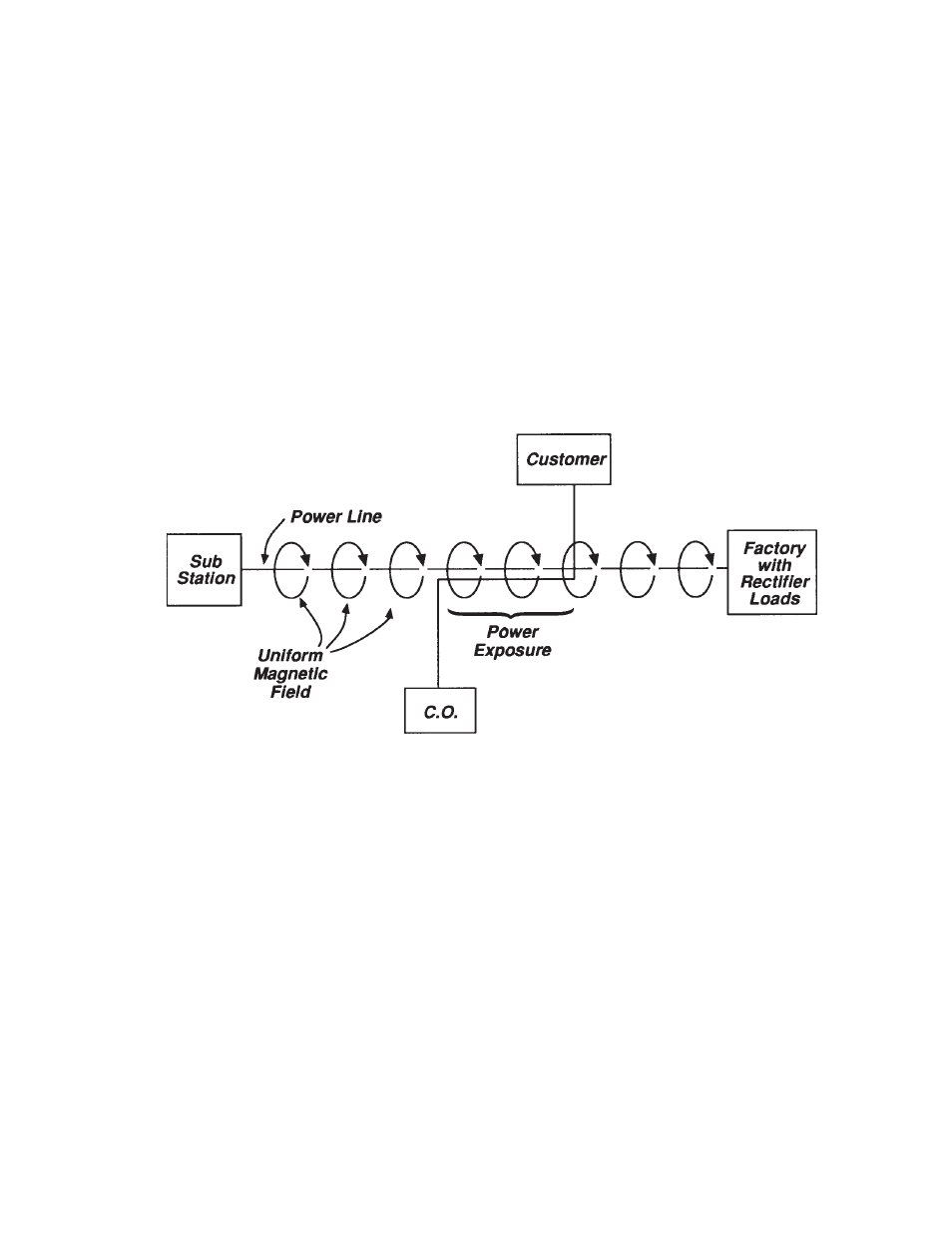Triplett Mitigator Loop Coil – 3232 User Manual
Page 9

rectifiers. In general, in order for enough current to flow to create a detrimental magnetic field, the
customer is usually a relatively large power user, like a commercial or industrial enterprise. Common
forms of rectifier-type equipment (including SCR’s) are large motor speed controllers, electronically con-
trolled heaters, electronic lighting, power supplies for electroplating, etc. Loads like department store
lighting and irrigation pumps have been known to produce harmonic currents. These loads produce a
distorted current waveform (as compared to a sine wave) which is comprised of numerous harmonics.
In order for current to flow in a circuit, there must be a source of current and a load for that current to flow
to. In our case, the source for the current may be a power substation and the load may be the customer
rectifier loads.
The current flow from the substation to the customer causes a magnetic field to be generated along the
entire length of the power lead from the substation to the customer. In the absence of transformers,
capacitor banks, regulators, side legs, etc., the current flow will be uniform along the entire length of
power line, and hence, the magnetic field created will also be of uniform strength along the entire length
of the power line. This is illustrated in Figure 7.
Figure 7
Uniform distribution of Magnetic Field
around a power line.
Figure 7 also shows a telephone line that is exposed to the power line for several spans. A customer on
the telephone cable is experiencing harmonic noise problems and a Loop Coil survey of the cable’s run
identifies the spans where the power line and the telephone cable are exposed to each other.
Remember, however, that the magnetic field surrounding the power line is relatively uniform. Consider
what this means. Exploring the length of the power line WILL NOT result in finding something on the line
or at either end of the line which radiates a higher level of harmonics than found at the offending power
exposure. That is, the output from the Loop Coil WILL NOT get stronger at either the substation or the
customer. The strength of the Loop Coil’s signal WILL NOT lead the craftsperson to the equipment
creating the harmonic currents. (If direct access to the customer’s load(s) is obtainable, it may be pos-
sible to measure increased harmonic output in the vicinity of the equipment.)
In our example, the rectifiers at the customer load are creating the harmonic currents. But, if we did not
know this, using the Loop Coil as our only source of information, we would not be able to easily determine
if the harmonic currents are being produced at the customer site, or if they are being produced at the
8
